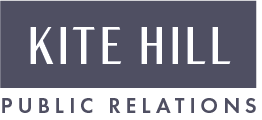Just last week, NRF 2020 wrapped its three-day, immersive retail conference that attracted more than 38,000 attendees and focused heavily on how retailers should look to invest in the imminent years, if not months, to future-proof their business strategies.
There was heightened energy throughout the show, and with more than 16,000 retailers in attendance, it was clear that this is a pivotal time for the retail market landscape. And as such, retailers need to disrupt their current models and quickly, or risk getting lost in the waves of new competition.
These are the five trends we noticed straight from the show floor, and they’re ones that should be on any retail innovator’s radar in 2020.
Consumers Take Charge
Consumers are used to having everything immediately available at their fingertips. Today’s shoppers are well informed and wish to have the most information available in front of them when looking to make a purchasing decision. With that in mind, electronic shelf labels (ESLs) were a top innovation on display at this year’s show. SES-imagotag, backed by BOE Display and a leader in retail IoT solutions, showcased its full VUSION retail IoT platform. Its digital labels and video displays engage with shoppers throughout the buyer journey, allowing consumers to read in-depth product reviews, and explore further details on pricing and product benefits directly at the shelf to help influence an informed buying decision.
Evolve to be Efficient
We hear all the time that brands need to better drive efficiency and it’s not unique to the retail industry. But what is unique to retail is the process to go about this. Retailers are starting to adopt an IT infrastructure that allows them to better refine and optimize in-store resources. As mentioned, shoppers crave that frictionless experience, and the world of retail needs to evolve to accommodate them both in-store and online.
Prioritize Omnichannel
Retailers are increasing investments in omnichannel. Similar to driving efficiency, there is a shift to combine in-store and digital experiences, which can allow for strategic partnerships and marketing innovation. For instance, brands can now directly target consumers through innovative shelf tags like SES-imagotag’s.
Intelligent Retail
Artificial intelligence emerged as the key buzzword of 2019 across many industries. 2020, however, is the year the talk becomes action, at least according to NRF. Satya Nadella of Microsoft opened the show with a keynote address that passionately spoke to the future of retail and the rise in intelligent solutions.
He notably mentioned that the retail industry is on a great path of reinvention. AI, cloud, digital security, and other next-generation technologies are fueling in-store innovations and accelerating overall market growth. Yet with this push to evolve, the industry is tapping into a wealth of new customer data. And with that, of course, come privacy concerns.
Grappling with Cybersecurity
With the rise of various regulations and privacy acts coming to surface, such as CCPA and GDPR, it is not a shock that retailers are putting privacy and security at the forefront. NRF held a cybersecurity workshop that focused on strategic insights into threats and mitigation of various risks across the retail sector. Attendees were able to get an in-depth look into the main challenges facing the industry and learn together how to better navigate this new terrain while dealing with an increased influx of customer data driving its way through stores.
The retail industry at large is ripe for disruption. NRF 2020 confirmed that, and we look forward to an exciting few years ahead as we continue to work with industry innovators and watch the next phase of retail unfold!
- Mackenzie Gavel, Account Supervisor and Talia Firenze, Account Associate




